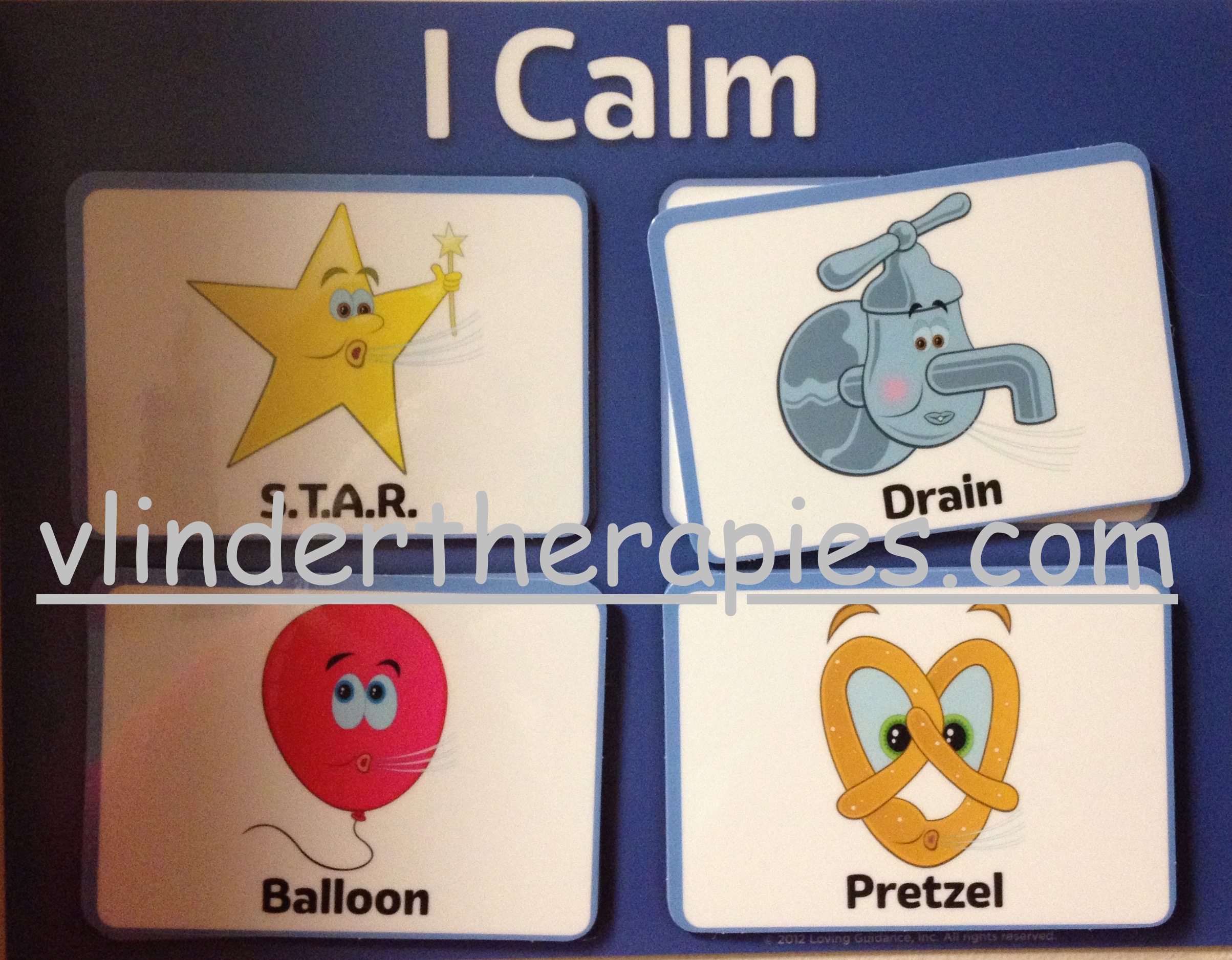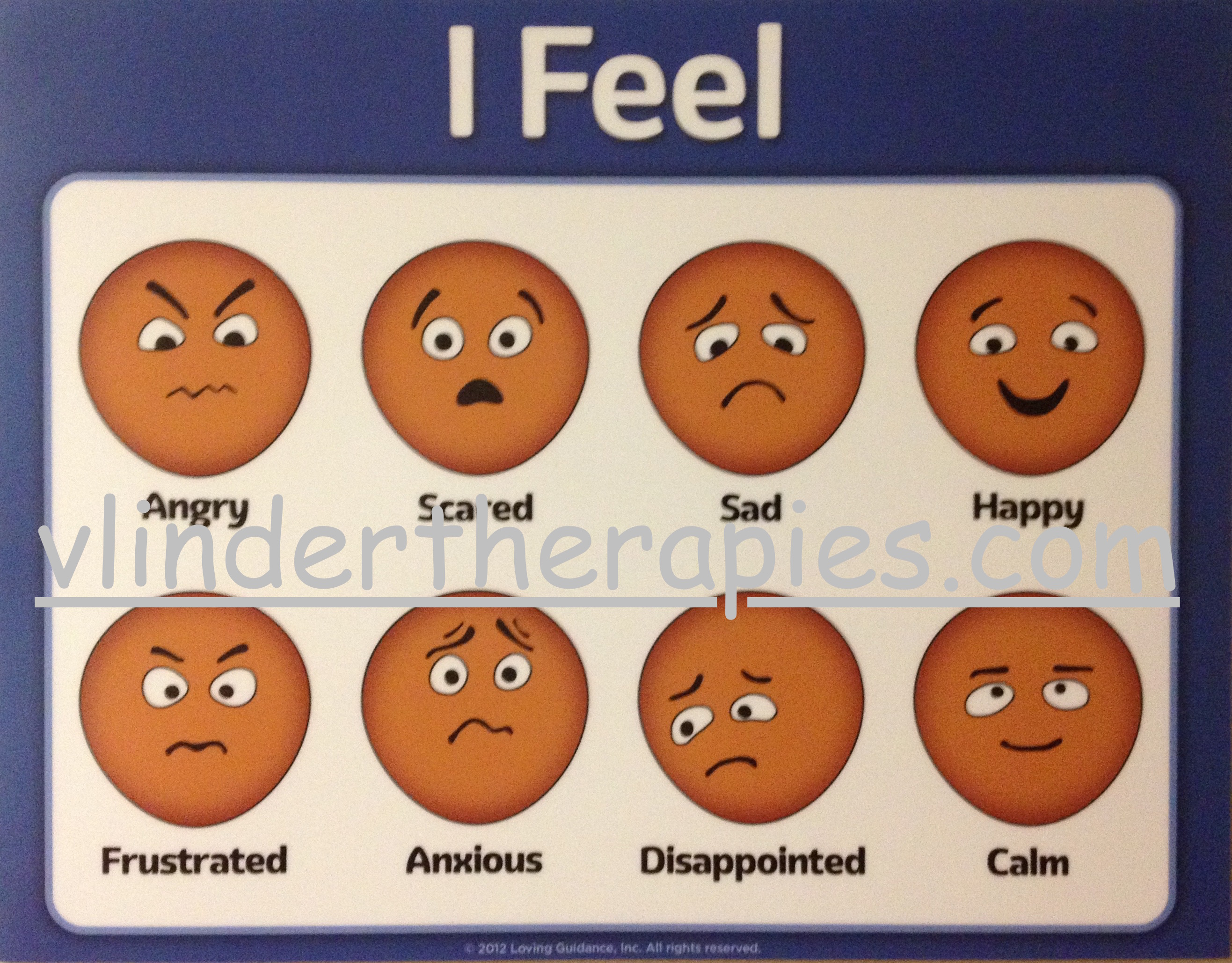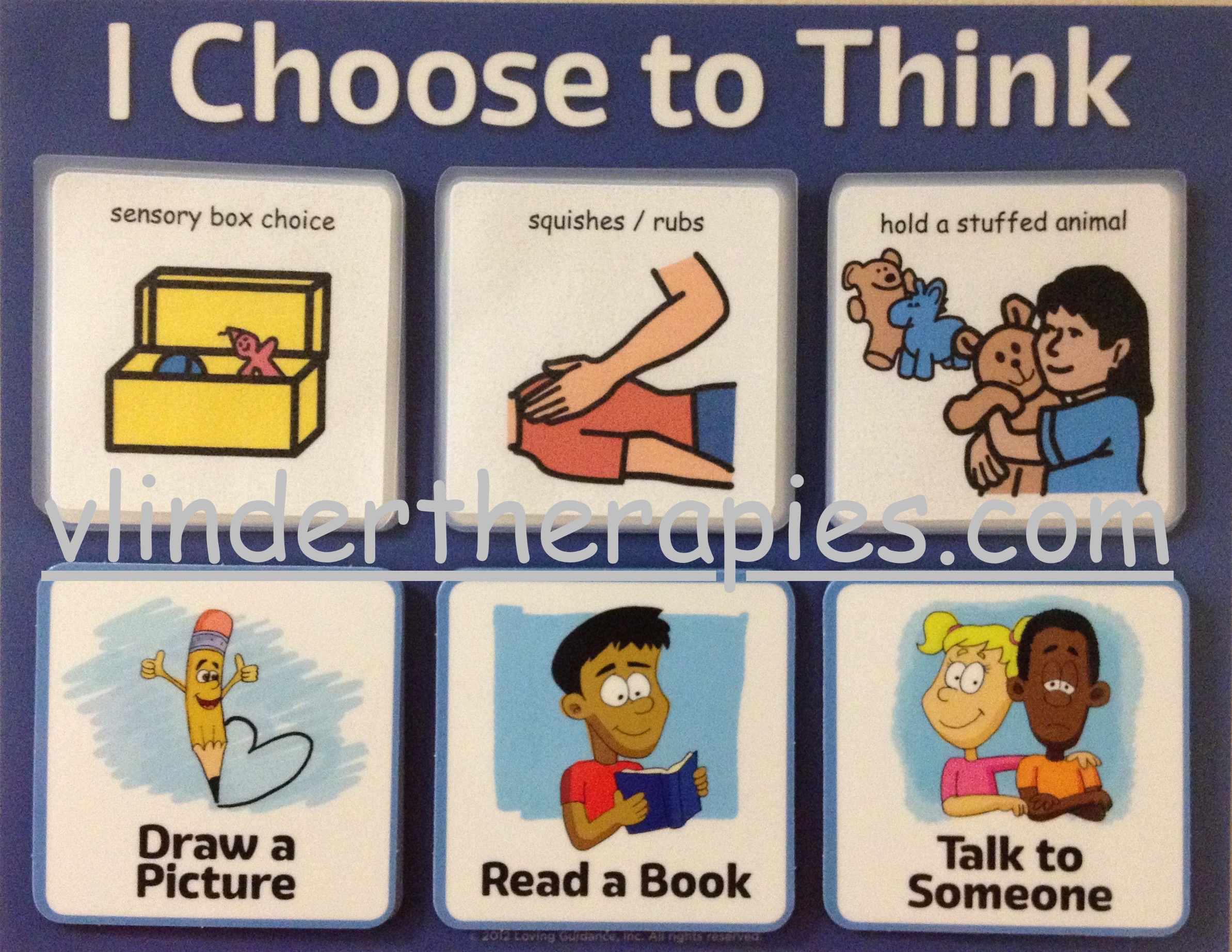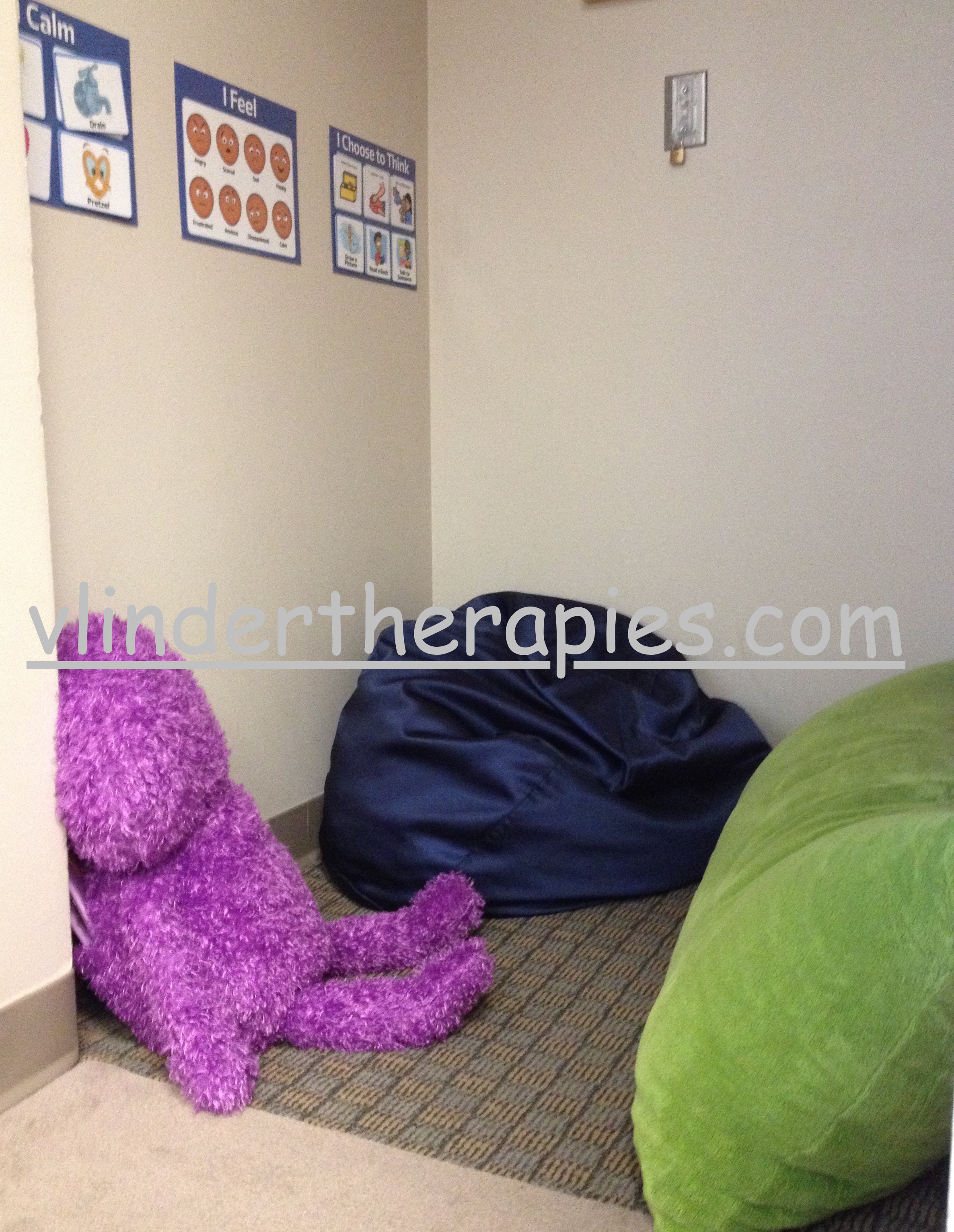Teaching Self-Regulation Skills
One of the SLP Facebook groups that I am in has been reading the book [affiliate link] Managing Emotional Mayhem The Five Steps for Self-Regulation by Dr. Becky A. Bailey.
Melt-down. Tantrum. Challenging behavior. Emotional upset. Escalation. Whatever you call it, at its core is the lack of skills needed to navigate emotional upset and/or disregulation. Self-Regulation is one of those all important executive function skills. It is "the ability to manage emotional upset and behavior", and a skill set that is particularly difficult to learn for children with special needs. Actually, many adults struggle with emotional wellbeing. Many of us have developed a dismissive-type response to negative emotions, which we learned through our family culture growing up. Just five pages into the book is the statement, "My best guess is that many of us have the emotional development of a toddler." Dr. Bailey goes on to say, "A toddler knows basically two states of being: pleasant and unpleasant...Ask adults how they are feeling. You generally get two answers: fine and upset." Many of us in the group reading this book reacted strongly to that paragraph. But as I thought about it, and processed through more of the book, I realized it rang true.
When we learn to regulate our emotions, we can benefit from the wisdom and moral compass they provide. Without healthy emotional development, we listen to the guidance of the loudest voice in the room instead of the quiet voice within us. (pg 12)
The ability to regulate our thoughts, feelings, and actions (self-regulation) is the foundation for... well, for our performance in pretty much everything we do. This essential skill is what allows us to insert a pause between that first impulse and the action we take; to move from the reactive "low brain" to the rational/thinking "high brain". A big part of executive function skills is about developing inner self-talk and for self-regulation in particular, an ability to communicate our way through conflict. Language and communication skills. Dr. Bailey first leads adults through the five step process to learn to manage our own feelings. We must learn how to remain calm so that we can help guide children through the steps to help them learn to manage their own feelings. What follows is a brief overview of the five steps based on my understanding thus far. There is of course more, but ultimately this is what we want kids to learn to do to manage their emotional upset.
THE FIVE STEPS
Step 1: I Am
- Recognize that the child is triggered
- Use noticing language to help the child become aware that he is triggered (describe what you see him doing/physical signs you see that signal he is triggered)
- Guide him to the Safe Place (if needed) to help him work through his emotion
Step 2: I Calm
- Invite the child to breathe with you/encourage 3 deep breaths; this ‘pause’ helps the child move from the reactive lower brain to the rational/thinking higher brain
- Help him to notice what just happened and the signs of his emotion to help figure out what he is feeling
- Reassure him that he is safe and “can handle this”
- Stay at this step until he takes at least 1 deep breath (ideally 3)
Step 3: I Feel
- Name the feeling
- Encourage the child to say “I feel ___”
Step 4: I Choose
- Encourage the child to make a Safe Place choice to help him finish calming down and take time to process
Step 5: I Solve
- Problem-solve with the child/coach him on how he can deal with the trigger next time
 The Safe Place: An important aspect of this program is the "Safe Place", which is a sacred space children go to work through their feelings and change their inner state of being from upset to calm. It is important to note that the Safe Place is not "time out". It is a learning center where they are instructed, encouraged, and supported through the five steps. The Safe Place includes:
The Safe Place: An important aspect of this program is the "Safe Place", which is a sacred space children go to work through their feelings and change their inner state of being from upset to calm. It is important to note that the Safe Place is not "time out". It is a learning center where they are instructed, encouraged, and supported through the five steps. The Safe Place includes:
- comfortable seating (e.g. beanbag, pillows, comfy chair)
- visual supports
- "tools" to help them calm (e.g. books, music, stuffed animals, sensory items, etc.)
The goal of this process is to teach children that emotions have value and to befriend them so that they can learn from and move through those feelings, rather than getting stuck and unable to cope. There are no "bad" or wrong feelings. You cannot control how you feel. We can, however, control how we act on our feelings - our behaviors. I have started incorporating this five step process (in conjunction with elements of The Zones of Regulation program) into my therapy sessions. I especially like the focus on teaching awareness of what they are feeling, and then how to work through it to return to a state of calm. I am still learning how to best coach children through the steps - I look forward to seeing how this helps shape behaviors and reactions to their inner states of being over time. I also love that the coaching process and use of visuals allow for this program to be implemented with very young children (and those with limited communication skills). The younger we start, the better! Yet, it also works for us adults (I am using it myself).
Do you routinely let your emotions naturally surface to consciousness where you can then regulate and manage the feelings? Doing so allows us to follow the internal guidance they provide and allows the feelings to then pass (rather than suppressing and holding on and getting stuck). I know I have much room for growth in this area. And I know that I want all children to develop a healthy emotional intelligence. It is hard work, but there are ways we can help teach them. And they will be all the more successful in life for it.
Only 168 pages long, Dr. Bailey packs a lot of information (citing research along the way) into this book. I found it to be an "easy" read, but thought-provoking and transformative. Whether or not you agree with everything she proposes, her words get you thinking and inspire you to examine your own emotional wellbeing, as well as how you are helping the kids in your life develop these important life skills. I am so glad I decided to read this book and recommend it! You can learn more about Dr. Bailey's Conscious Discipline approach (and find materials/books) at consciousdiscipline.com. FYI - When I purchased this book, it was much cheaper through her website versus on Amazon.
Disclosure: I purchased the book and received no compensation for this post. The opinions are all mine. This post contains affiliate links for your convenience.
 Saturday, April 25, 2015 at 6:52PM
Saturday, April 25, 2015 at 6:52PM  Post a Comment →
Post a Comment → 
Reader Comments